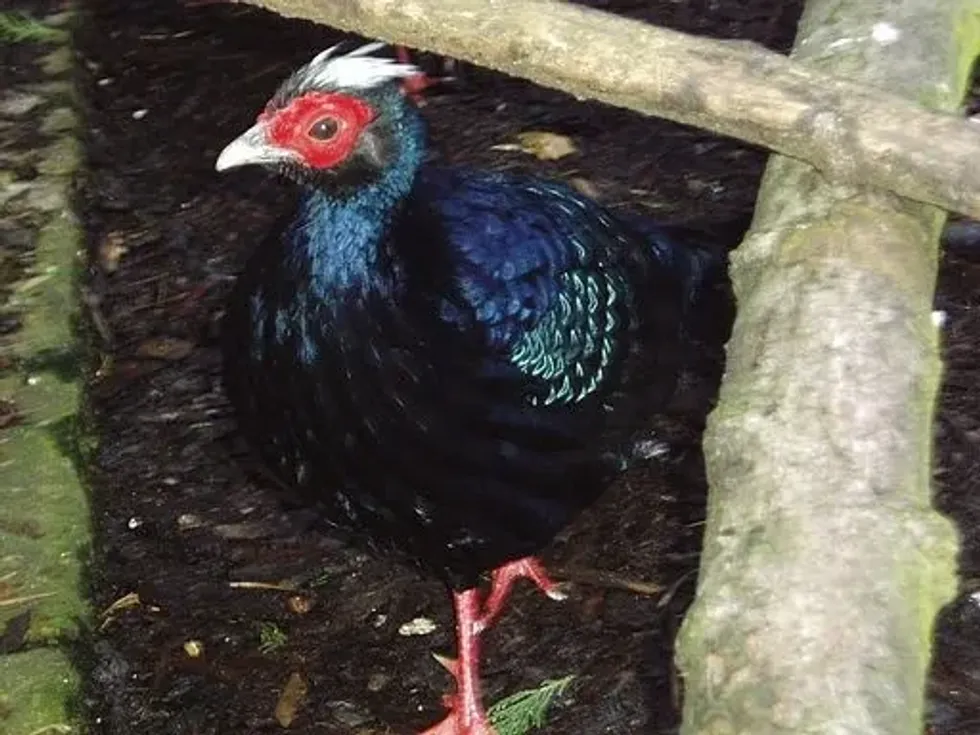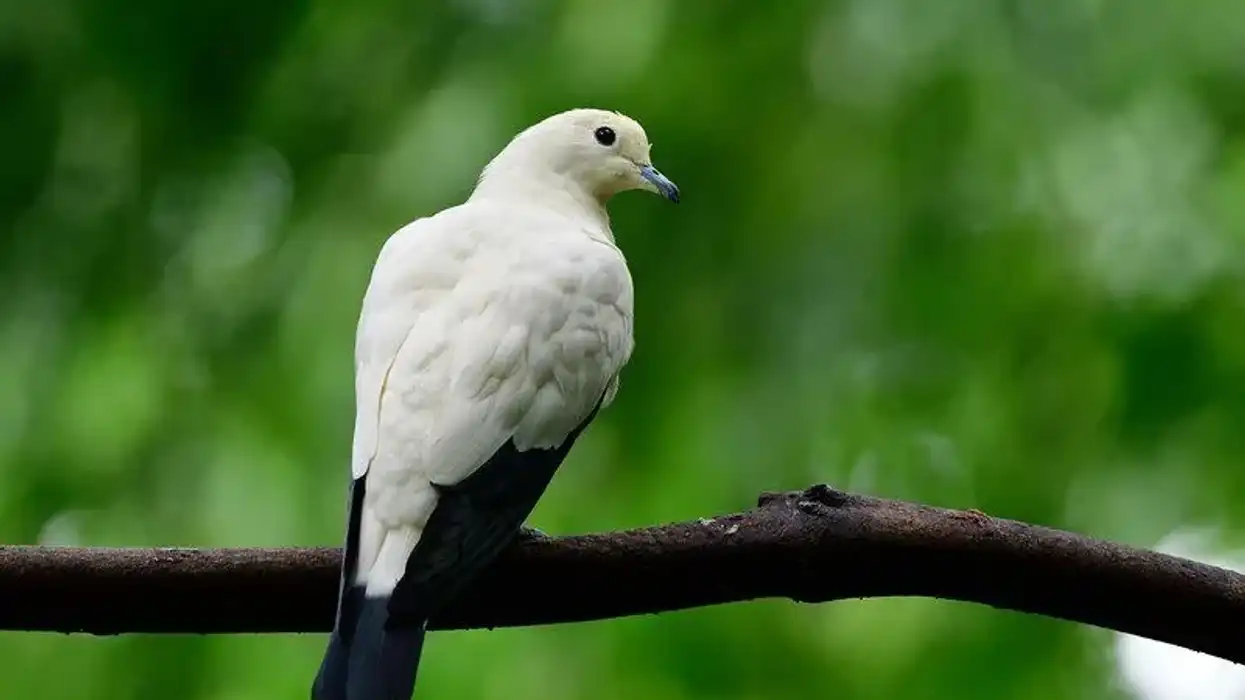Edward's pheasant (Lophura edwardsi) is a bird of the pheasant family. They are found in two different forms of varieties: L. e. hatinhensis and L. e. edwardsi.
The L. e. edwardsi is known as the nominate form, whereas, the L. e. hatinhensis is known as the northern form. The L. e. edwardsi has a white crest on its head. These two forms of varieties are a result of inbreeding.
The inbreeding is hypothesized to have occurred between two local, restricted species. Some scientists believe that the species status of the northern form is different from the species status of the nominate form. These birds are found in three major regions of Central Vietnam.
Edwards's pheasant species are facing the threat of extinction due to ongoing habitat loss. A lot of conservation efforts are being made by zoos all over Vietnam for Edwards's pheasants.
Here are some extremely interesting Edwards's pheasant facts that will certainly intrigue you. Afterwards, do check our other articles on blue jay facts and finch facts as well.
Edward's Pheasant Interesting Facts
What type of animal is Edward's pheasant?
Edward's pheasant (Lophura edwardsi) is a bird. It is a colorful bird with a stout body type. Females and males have appearance differences as females are brown in color, while males are predominantly red-colored.
What class of animal does Edward's pheasant belong to?
Edwards's pheasant belongs to the birds class of animals. It comes from the family of pheasants. There are two types of form of this bird species, probably due to the inbreeding of a restricted population.
How many Edward's pheasants are there in the world?
The current population size of Edward's pheasants, in the world, is in the range of 50-249 birds. Edwards's pheasant population is Critically Endangered in the wild. This low population number is a cause of serious concern and efforts are being carried out by the authorities and different organizations for the preservation of this Endangered bird.
Where does Edward's pheasant live?
Edward's pheasant (Lophura edwardsi) lives in the rainforests of Vietnam.
What is Edward's pheasant's habitat?
Edward's pheasant habitat comprises rainforests in the country of Vietnam. These birds have not been spotted since 2000 in their natural habitat. They used to live in regions with maximum rainfall. They live on green trees and evergreen lands. These pheasant birds have lost a lot of their habitat due to deforestation.
Who do Edward's pheasants live with?
Edward's pheasant lives in packs with members of their own species. They can also be kept in captivity in zoos with other animals as well.
How long does Edward's pheasant live?
Edward's pheasant has a relatively average lifespan. It can live for up to 10 years.
How do they reproduce?
The breeding season of Edward's pheasants is from February to May. These birds attain sexual maturity by the age of 12 months. Males conduct courtship rituals to impress females of this species. After the pheasants’ mating, females lay eggs in the tree hollows.
The clutch size of these birds is four to seven eggs. The incubation period for Edward's pheasant eggs to hatch into chicks is 24-25 days. The chicks hatched are taken care of by both the parents.
What is their conservation status?
The conservation status of Edward's pheasant (Lophura edwardsi) is Critically Endangered as per the IUCN. This Endangered status was assigned in the year 2012. The reason behind the drastic reduction in their breeding population is deforestation that resulted in habitat loss.
Edward's Pheasant Fun Facts
What do Edward's pheasants look like?
Edward's pheasants show sexual dimorphism in accordance with plumage color. Males are blue-black in color and females are chestnut brown. The chicks are brown in color. As the chicks grow they develop blue or chestnut brown color depending on their sex.
These birds have red legs. Male pheasants have a crest on their heads. This crest is white in color. They also have an upper tail. The tail feathers are white in some forms of birds.
How cute are they?
Edward's pheasants are very cute. Males of this species especially have exquisite colors. They are beautiful wild birds that have a very cute appearance.
How do they communicate?
Edward's pheasants communicate through the vocals. They have an alarm call sounding 'puk-puk-puk' when they encounter danger. These wild birds use such vocals to deliver messages within their species.
How big is Edward's pheasant?
Edward's pheasant is a medium-sized bird. Its length lies in the range of 23-26 in (58-65 cm), including its tail feathers. The Edwards's pheasants are four to five times bigger than a crow.
How fast can Edward's pheasant fly?
Edward's pheasant can fly up to speeds of 60 mph (96 kph) in the wild, but normally it cruises around at speeds of 10 mph (16 kph).
How much does Edward's pheasant weigh?
Edward's pheasant is a medium-sized wild bird. It weighs in the range of 2.2-2.4 lb (1-1.08 kg).
What are the male and female names of the species?
Males of Edward's pheasant species are called cocks and the females of Edward's pheasant species are called hens.
What would you call a baby Edward's pheasant?
Baby Edward's pheasants are called chicks.
What do they eat?
Edward's pheasants are carnivorous birds. They prey on insects and arthropods. Their prey includes crickets and worms. They feed on berries, buds, leaves, grains, seeds, greens, in the wild. They can be fed pellets and chopped fruits.
Are they dangerous?
Edward's pheasants are not really dangerous. They willfully do not attack humans. But if provoked, they use their legs to attack which can cause deep cuts.
Would they make a good pet?
Edward's pheasant is wild species of bird. They have not been tried to be domesticated. These birds are near extinction from the wild. Keeping them as a pet, hence, is illegal.
Did you know...
Parks and zoos in Vietnam are making constant efforts for the conservation of Edward's pheasants.
Pheasants are well adapted to the climate in the UK and breed freely without any human supervision. But contrary to the popular belief, they are not native to Scotland.
How did Edward's pheasants get their name?
Edward's pheasant is named in the honor of a French ornithologist. This French ornithologist, Alphonse Milne-Edwards, is known to first describe this species. That is where Edward's pheasant gets their name from.
Are Edward's pheasants going Extinct?
Yes, Edward's pheasants are facing severe extinction. Their species has been listed as Critically Endangered in the IUCN list. Their populations have almost disappeared from the wilds.
The main reason for their decreasing population trend is habitat loss. Most of their natural habitat has been removed for human benefit. Also, their illegal hunting has been carried out by hunters a large number of times.
Here at Kidadl, we have carefully created lots of interesting family-friendly animal facts for everyone to discover! For more relatable content, check out these northern bobwhite facts and flamingo facts pages.
You can even occupy yourself at home by coloring in one of our free printable edward's pheasant coloring pages.










